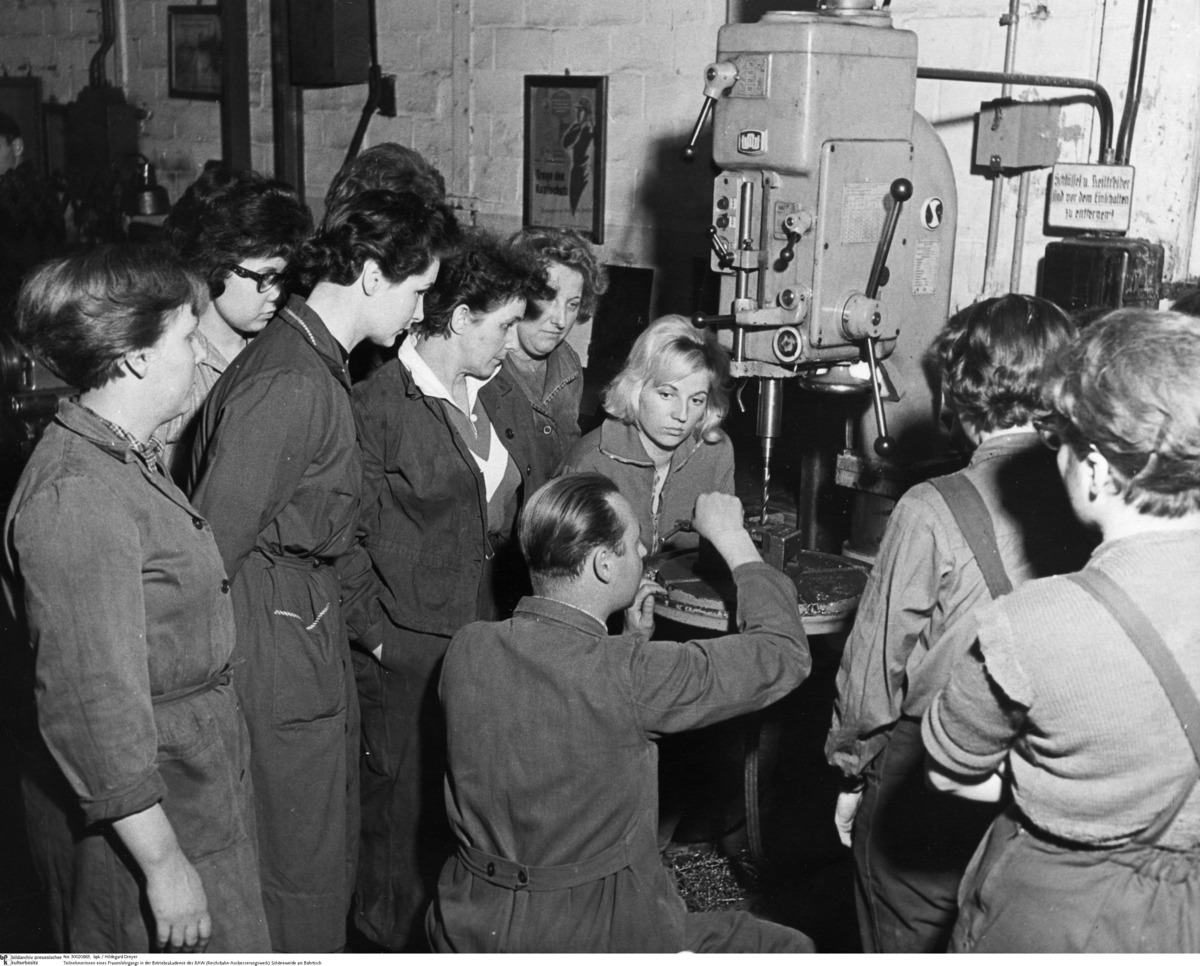Abstract
Legal equality between men and women was enshrined in the GDR
constitution of 1949. The constitution explicitly repealed laws and
regulations that stood in the way of women’s emancipation, and it also
decreed that women had a right to equal pay for equal work. In the GDR,
the economic emancipation of women was supposed to form the very basis
of social equality. Therefore, the government supported and promoted
women’s employment, which was not the case in the Federal Republic.
While the GDR’s stance reflected an ideology of equality, it was also
informed by an acute labor shortage that presented certain economic
imperatives. In 1962, women represented 44% of the total labor force in
the GDR; in the Federal Republic, they accounted for 33.5%. The
photograph features participants in a women’s apprenticeship program at
repair shop of the East German State Railways in Schöneweide (East
Berlin). They are shown at a drill station.
